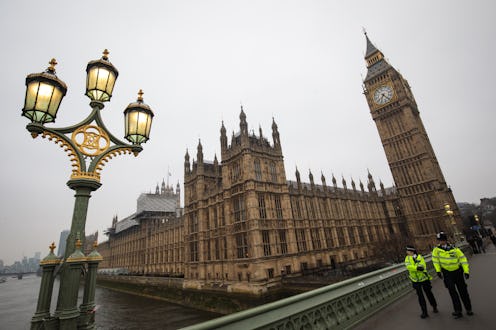News
Muslim Woman Targeted By Islamophobia After London Attack

Earlier this week, a terrorist attack took place outside the U.K. parliament, leaving three victims dead and more than a dozen people injured. On a cloudy afternoon in London, a car plowed into multiple pedestrians, moments before the driver stabbed a police officer, killing him. The attacker was then slain by another officer. It was a grisly scene, and a photograph taken moments later whipped up a bad reaction ― a photo of a Muslim woman on Westminster bridge drew an Islamophobic response.
If you didn't see the image, it was taken by photographer Jamie Lorriman. Be warned: It's graphic. The woman in question has requested that media outlets not use the photo, due to the deluge of racist and anti-Islam hatred she's faced, so no image will be presented here.
The photo shows a Muslim woman walking past an injured person lying on the side of Westminster Bridge, her hand up to one side of her face as she looks at her phone. The woman is wearing a hijab, making it clear that she's a member of the Muslim faith, and many right-wing social media accounts tried to portray her expression as indicative of obliviousness, or an unwillingness to sympathize with the victim.
Absent any religious angle, it was a silly and fallacious and cruel reaction. Assessing a person's response to something so shocking, on the basis of micro-expressions in a still photograph, is a risky and unfair business. But doing so in the aftermath of a terrorist attack, in an attempt to falsely paint a bystander to the horrifying event as callous, is egregious and wrong.
As the Guardian reported after the attack, Lorriman said the woman was visibly distraught and horrified, as well as trying to clear the scene of the attack:
Looking back at the pictures now she looks visibly distraught in both pictures in my opinion. She’s in the middle of an unfolding horrific scene. ... I think her expression to me says that she’s horrified by what she’s seen and she just needs to get out of the situation. We were all being told to clear the bridge at various stages, so it’s not unreasonable to think she’d been told to leave the bridge at some point just like everybody else.
The identity of the woman in the photo is not known, and given the hateful reaction it whipped up, that's probably for the best.
However, in a statement released through the advocacy group TellMAMA, which highlights incidents of anti-Muslim sentiment, she explained how the moment unfolded for her. Here are her words, in full:
I’m shocked and totally dismayed at how a picture of me is being circulated on social media. To those individuals who have interpreted and commented on what my thoughts were in that horrific and distressful moment, I would like to say not only have I been devastated by witnessing the aftermath of a shocking and numbing terror attack, I’ve also had to deal with the shock of finding my picture plastered all over social media by those who could not look beyond my attire, who draw conclusions based on hate and xenophobia.
My thoughts at that moment were one of sadness, fear, and concern. What the image does not show is that I had talked to other witnesses to try and find out what was happening, to see if I could be of any help, even though enough people were at the scene tending to the victims. I then decided to call my family to say that I was fine and was making my way home from work, assisting a lady along the way by helping her get to Waterloo station. My thoughts go out to all the victims and their families. I would like to thank Jamie Lorriman, the photographer who took the picture, for speaking to the media in my defence.
This was a sad reaction on the back of a horrifying crime — part of an ongoing effort by the anti-Islam and white nationalist right-wing to stigmatize images of Muslims, making the very sight of Muslims in public life appear somehow inherently radical or sinister.
Hopefully, Muslims will someday not be smeared as supportive and sympathetic to violent terrorism on the basis of innocuous photographs. But, clearly, today is not that day.